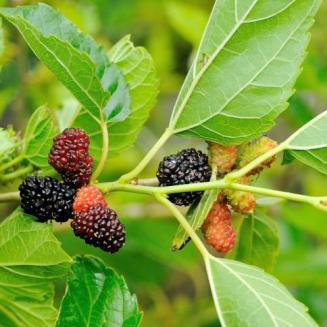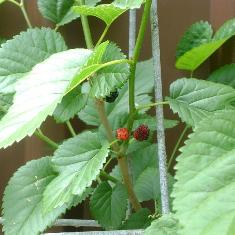
Code: MOAG
|
:
|
Description: Small plant, 2-3m. high, occasionally reaching 5-6m. when old. Leaves alternate, entire or trilobed; margins toothed; 3 nerves from the base. Flowers unisexual, monoecious, in axillary spike (catkin). Fruit: a syncarp of many drupes, initially red then dark purple to black.
Flowering period: March - May.
Distribution: Cultivated for its leaves, used as food for silk-worms, and its edible fruit, used in elixirs and drugs.
Parts used: Leaves, fruit and root-bark. The leaves are harvested at the beginning of summer. Root-bark is collected all the year round. Fruit is picked when ripe. The leaves and root-bark are used fresh or dried The fruit is used fresh.
Chemical composition: The leaves contain amino acids phenylalanine, leucine, alanine, arginine, sarcosine; pipercholic acid; proteins; vitamins C, B1, D; organic acids: succinic, propionic and isobutyric; tannin.
Therapeutic uses: The leaves are used in treating coryza, cough and insomnia, in a daily dose of 6 to 18g in the form of a decoction. The root-bark is employed in the treatment of asthma, oliguria, rheumatism and osteodynia, in a dose of 6 to 12g daily in the form of a decoction. The fruit in elixir and syrup form is prescribed for anaemia and dysopia, the usual dose being 12 to 20g per day. Syrup made of the ripe fruit serves as a mouth-wash in cases of sore throat and ulcerous stomatitis.
